I love using recipes from this site, and today's lunch was this tasty Onigiri. The way I'm handling the rice is getting better, and my friends are asking for my secret.

Who knew that a humble ball of rice could take center stage on the dining table? Welcome to the world of Onigiri with Beef Shigureni, a delightful Japanese snack that brings simplicity and flavor together in a perfect harmony.
The heart of this dish, the Onigiri, is more than just rice; it's a symbol of Japanese culture, a quick lunch for school children, and a loving gesture from a caring friend. Stuffed with a savory Beef Shigureni, it's a rich experience with every bite. The beef, cooked slowly with ginger and a splash of sake, mirrors the thoughtful process that goes into making these flavorful rice balls. It's not just food; it's a little piece of art in your hand.
Many people remember their first taste of Onigiri at a local Japanese market or perhaps a lively food stall. The pleasant surprise of the beef inside is like uncovering a hidden treasure, making it a joy to eat and share.
If you've never tried your hand at making Onigiri, fear not! This dish is all about enjoying the process, from washing the rice to molding the final shape. The wholesome ingredients speak for themselves, and the result is something authentic and comforting, perfect for those moments when you crave something a little different yet familiar.
JUMP TO:
INGREDIENTS:
Uncooked Japanese Short-Grain White Rice: Japanese short-grain rice is preferred for its sticky texture, which holds the Onigiri together. It also provides a unique taste that complements the other ingredients.
Alternatives: If Japanese short-grain white rice is unavailable, you can use other types of sticky rice, but the texture and taste may vary.
Rich Marbled Japanese Beef or Kobe Beef: The use of rich marbled Japanese beef or Kobe beef elevates this dish to a gourmet level. The marbling adds a luxurious, melt-in-the-mouth texture, and the specific flavor profile of Japanese beef complements the traditional ingredients.
Alternatives: While substituting other beef cuts is possible, it's worth sourcing authentic Japanese or Kobe beef for the most authentic experience.
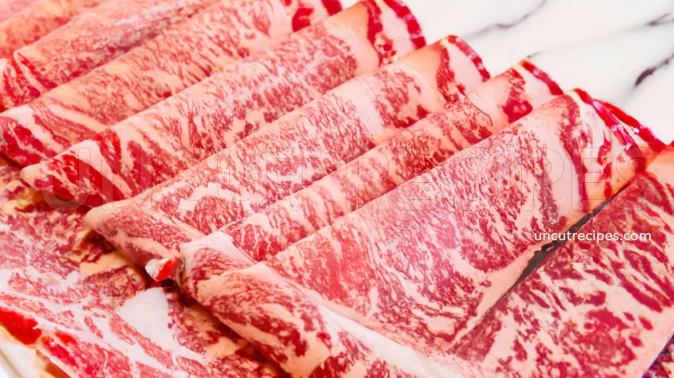
Ginger Root: Fresh ginger root adds a zesty kick and helps balance the savory elements. It's best grated or finely minced.
Alternatives: Ground ginger can be used, but fresh ginger is generally preferred for its vibrant flavor.
Sake: Sake's subtle flavor deepens the umami, working in harmony with the Japanese beef.
Alternatives: Chinese rice wine or dry sherry may be used, but sake is preferable for authenticity.
Mirin: Mirin, a sweet Japanese cooking wine, adds a gentle sweetness and glazed appearance.
How to Make at Home: Mix 1 tablespoon of white wine or sake with a half teaspoon of sugar as a substitute for 1 tablespoon of mirin.
Alternatives: A mixture of honey and white wine or a sweet sherry can be used if mirin is unavailable.
Nori Seaweed: Nori provides a briny taste and an appealing visual contrast. It should be crisp and free of moisture.
Alternatives: If nori is unavailable, other edible seaweeds or thinly sliced vegetables such as cucumber can be used, though the flavor profile will change.
MAIN STEPS:
Beef Cut and Size: Utilizing rich marbled Japanese beef or Kobe beef is vital. Cut into 5cm/2in long and 2.5/1in wide strips to maximize flavor absorption. This cut allows the beef to soak in the marinade, producing a tender, flavorful result.
Slow Cooking the Beef: Simmering the beef for at least 20 to 30 minutes is essential. This slow cooking ensures that the beef absorbs the flavors of the sauce. Rushing this process can result in less flavorful beef.
Molding the Onigiri: Shaping the onigiri requires careful handling to form a filled core with beef. Press gently to hold its triangular form without crushing the rice. Wet hands with salted water to prevent sticking, enhancing the flavor.
Incorporating the Nori Seaweed: The addition of roasted seaweed adds crunch and taste. Wrap it carefully around the shaped onigiri for a seamless finish.
SERVED WITH:
Starter: Edamame (Japan): Lightly salted and boiled young soybeans, usually served in the pod. A great way to whet the appetite and balance the richness of the beef.
Side Dish: Kimchi (Korea): Fermented vegetables, typically napa cabbage and Korean radishes, made with a widely varying selection of seasonings. It adds a spicy and tangy contrast to the savory beef.
Main Course: Teriyaki Salmon (Japan): Salmon marinated and glazed in a mixture of soy sauce, sake, mirin, and sugar, then grilled. It complements the flavors of the beef and the texture of the rice.
Second Course: Chawanmushi (Japan): A delicate steamed egg custard with shrimp, mushrooms, and ginkgo. Its subtle flavor provides a gentle follow-up to the more robust beef dish.
ALTERNATIVES:
Starter: Beef Carpaccio (Italy): Thinly sliced raw beef, typically served as an appetizer with olive oil, lemon juice, and capers. A delicate way to enjoy the natural flavors of beef.
Main Course: Beef Bourguignon (France): A slow-cooked beef stew with red wine, mushrooms, and carrots. The rich, comforting flavors make it a beloved dish in French cuisine.
Side Dish: Beef Empanadas (Argentina): Savory pastries filled with ground beef, onions, and spices. They are a popular snack and side dish in various South American countries.
Second Course: Beef Rendang (Indonesia): A slow-cooked dry curry deeply spiced with ginger, turmeric, lemongrass, and chilies. It's an iconic dish in Indonesian cuisine, rich in flavor and texture.
Dessert: Chocolate Beef Cake (Modern Fusion): An adventurous fusion dish that incorporates beef fat into a rich chocolate cake, offering a unique savoriness.
HISTORY:
Onigiri, also known as rice balls, is a beloved Japanese snack with deep historical roots. Combined with beef shigureni (a flavorful, simmered beef dish), this culinary creation offers a rich blend of tradition and innovation.
The origin of onigiri dates back to the 11th century, during the Heian period in Japan. Onigiri was a convenient and portable food for soldiers and travelers, and over time, it became a staple in Japanese culture. It symbolized the significance of rice in Japanese cuisine, serving as both a main meal and snack.
The innovation of combining onigiri with beef shigureni likely occurred much later, reflecting a fusion between traditional Japanese cuisine and new culinary techniques. While there's no specific record pinpointing the exact creator or time of this combination, it's a delicious testament to Japan's culinary evolution.

Culturally, onigiri with beef shigureni has made its way into various aspects of Japanese life. Onigiri itself is often associated with motherly love, as mothers prepare these rice balls for their children's lunch boxes. The addition of beef shigureni, with its rich, simmered flavor, adds a luxurious touch to a humble dish.
Over time, onigiri has expanded in variety, with different fillings and flavors representing various regions in Japan. The adaptation of using beef shigureni showcases how Japanese cuisine has embraced both tradition and modernity, willing to experiment with flavors and textures while still honoring its culinary heritage.
TIPS:
Experiment with Aged Soy Sauce: Aged soy sauce, such as shoyu, brings a richer, deeper flavor to the dish. Select a variety with the desired age to complement the beef, enhancing the overall profile of the dish.
Artisanal Butchery Techniques: Select a high-quality cut of beef, such as Wagyu, and utilize specific butchery techniques like sujihiki (Japanese slicing) to create ultra-thin, tender strips. This can enhance the texture and allow the beef to absorb more flavor.
Incorporate Unique Garnishes: Add finely sliced green yuzu zest or a sprinkle of sansho pepper to the finished Onigiri for a surprising and delightful twist in flavor.
Hand-Pick and Toast the Nori: Choose premium-quality Nori sheets and lightly toast them over an open flame just before wrapping. This will maximize both flavor and texture, providing a truly gourmet touch.
Create a Beef Stock Base for the Dashi: For an even deeper flavor, consider preparing a beef stock infused with classic Japanese ingredients like kombu and bonito flakes. Use this as the base for the beef cooking liquid, marrying the beef and rice components in flavor.
Serve with a Special Dipping Sauce: Consider serving the Onigiri with a dipping sauce made from a reduction of sake, mirin, soy sauce, and dashi, infused with a hint of fresh wasabi. It can elevate the dish by offering a new layer of complexity.
Recipe Information
Skill Level
|
Time 1 Hour |
Price
|
Serves 1 to 8 People |
| Healthiness |
Nutritional Information |
| Ratings (Add Rating & Review) |
Reviews 21 Reviews |
Ingredients:
-
2 cups of Uncooked Japanese Short-Grain White Rice
1.5 cups Water
For the Beef Shigureni
0.68 cups Beef
0.4 cups Water
4 teaspoons Soy Sauce
2 teaspoons Sugar
2 teaspoons Ginger Root
2 teaspoons Sake
2 teaspoons Mirin
2 teaspoons Ground Sesame Seeds
Nori Seaweeds
( Roasted Japanese Seaweed )
Allergens
| Soy | Gluten | Sesame | Fish |
Directions:
For The Beef:
01 - Start by cutting the Beef into strips around 5cm/2in long and 2.5/1in wide.
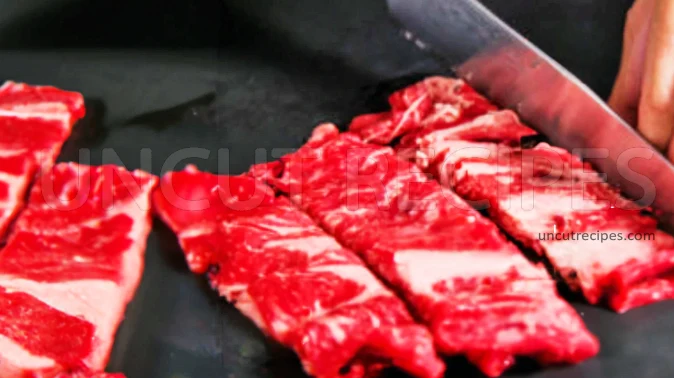
02 - Same for the Ginger Root. Cut the Ginger into very thin strips around 5cm / 2in long. These sizes allow the flavors to meld well during cooking.

03 - In a pot, heat the Water, then add the sliced Ginger, Soy Sauce, Sugar, Sake, and Mirin. This combination creates a flavorful base for the Beef.
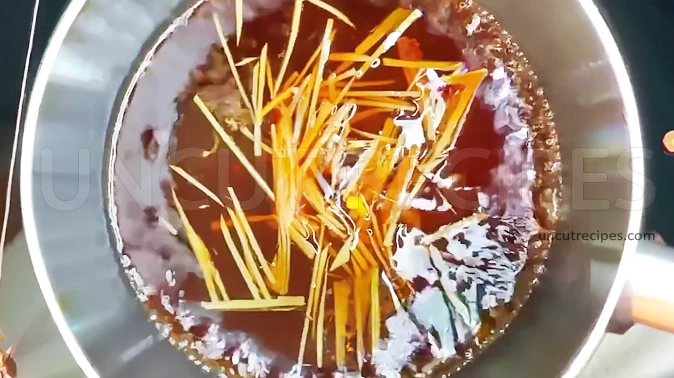
04 - Once the Water reaches a boil, gently add the Beef strips, stirring well to ensure they are evenly coated with the Sauce.
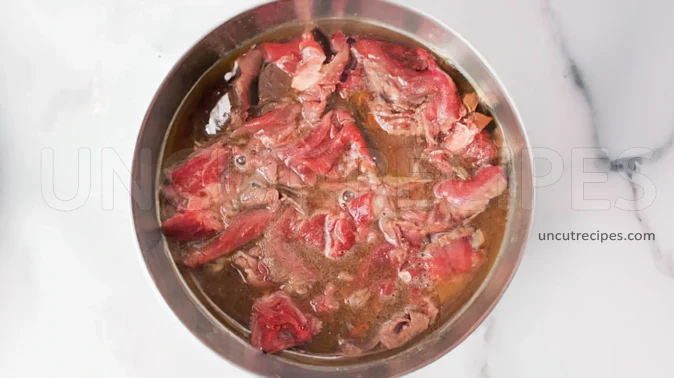
05 - Cover the pot with a lid and let it cook for 20 to 30 minutes. This slow cooking helps the Beef absorb all the flavors.
06 - After the cooking time, uncover the pot and continue cooking until almost all the liquid is absorbed. This concentrates the flavors.

07 - Finally, remove the pot from the heat and mix in the Sesame Seeds for an added touch of texture and flavor.
For The Rice:
- If you have a Rice Cooker, prepare the Rice as directed by your appliance's instructions. However, if you're cooking on a stovetop, follow these directions:
08 - Place the Uncooked Japanese Short-Grain White Rice into a large bowl. Using your hands, gently wash the Rice by stirring in a circular motion. You'll notice the Water becoming cloudy; drain this off and repeat the process 3-4 times. This helps to remove excess starch, giving the Rice a cleaner taste.
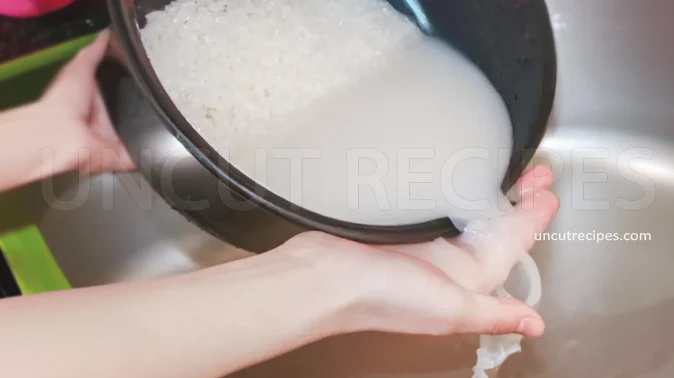
09 - Allow the cleaned Rice to soak in fresh Water for 30 minutes. This helps the grains soften slightly before cooking. Then, drain the Rice thoroughly using a sieve, letting it sit for at least 15 minutes. This ensures that the Rice is well-drained and ready for cooking.
10 - In a heavy-bottomed pot (one with a thicker base that heats evenly), combine the well-drained Rice and the Water. Using a pot with a tight-fitting lid will help in maintaining and distributing heat efficiently throughout the cooking process.

11 - Cover the pot securely with the lid and bring the Water to a boil over medium heat. Keep the lid on to trap the steam, which is crucial for cooking the Rice evenly.
12 - Once the Water starts to boil, immediately reduce the heat to the lowest setting. Continue to cook the Rice with the lid on for 12 to 13 minutes, until all the Water is absorbed.
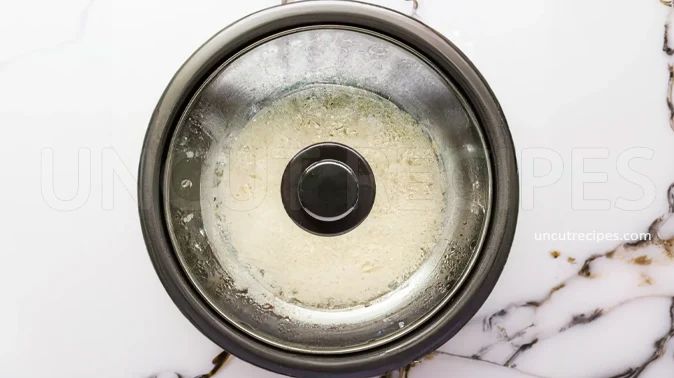
13 - Around the 12- to 13-minute mark, quickly lift the lid to check if there is any Water left. If you see any, simply close the lid and cook for another minute or so. This ensures that the Rice is fully cooked without becoming mushy.
14 - After the cooking is complete, remove the pot from the heat but leave the lid on. Let it sit like this for another 10 minutes. This steaming process makes the Rice fluffier.
15 - Carefully remove the lid, then transfer the cooked Rice to a large plate or baking sheet lined with parchment paper. Spreading it out helps it cool down more uniformly.
16 - Using a Rice paddle or a flat spoon, gently fluff the Rice. Allow it to cool until it's warm to the touch, but not cold. You want it warm enough to handle comfortably but not cool down completely, as it'll be used to make the Onigiri.
For The Onigiri:
17 - Wet your hands with Water and apply some Salt to prevent sticking and add flavor.
18 - Take a handful of the Steamed Rice, just enough to make one Onigiri.
19 - Place some of the prepared Beef Shigureni in the center of the Rice.
20 - Cover the Beef with more Rice, creating a filled core.
21 - Carefully mold the Rice into a triangular shape, pressing gently to hold its form.
22 - Finally, wrap your shaped Onigiri with a sheet of Roasted Seaweed. This adds a crunchy texture and a savory note. Enjoy your homemade Onigiri with Beef Shigureni!

Notes:
Substitutions for Beef: If beef is not preferred, it can potentially be replaced with chicken or other meats, though this may change the flavor profile.
Ginger Form: Fresh ginger is preferred, but ground ginger could be used in a pinch. Adjust the amount accordingly, as ground ginger is more concentrated.
Seaweed Alternatives: If Nori Seaweeds are unavailable, other forms of edible seaweed suitable for wrapping may be used.
Onigiri Storage: Onigiri can be wrapped individually in plastic wrap and stored in the refrigerator for 1-2 days. To enjoy later, reheat gently without drying out the rice.
Nutritional Information
( Per Portion )
|
Calories |
340 kcal (17%) |
| Total Carbohydrate | 77g (28%) |
| Cholesterol | 30mg (10%) |
|
Total Fat |
5g (8%) |
| Saturated Fat | 1.5g (8%) |
| Polyunsaturated Fat | 0.5g |
| Monounsaturated Fat | 2g |
| Trans Fat | 0g |
| Fibers | 1g (4%) |
| Protein | 10g (20%) |
| Sugar | 3.3g (13.2%) |
|
Vitamin A |
0 IU (0%) |
|
Vitamin B1 (Thiamin) |
0.2mg (17%) |
| Vitamin B2 (Riboflavin) | 0.1mg (8%) |
| Vitamin B3 (Niacin) | 2.5mg (16%) |
| Vitamin B5 (Pantothenic Acid) | 0.5mg (10%) |
| Vitamin B6 | 0.2mg (12%) |
| Vitamin B7 (Biotin) | 2mcg (7%) |
| Vitamin B9 (Folate) | 20mcg (5%) |
| Vitamin B12 | 0.8mcg (33%) |
| Vitamin C | 0.5mg (1%) |
| Vitamin D | 0 IU (0%) |
| Vitamin E | 0.5mg (3%) |
| Vitamin K | 5mcg (4%) |
| Choline | 40mg (7%) |
| Carnitine | 5mg |
|
Calcium |
15mg (1.5%) |
|
Chloride |
60mg (1%) |
| Chromium | 1mcg (2.5%) |
| Copper | 0.05mg (6%) |
| Fluoride | 0.01mcg (0%) |
| Iodine | 2mcg (1%) |
| Iron | 2.5mg (14%) |
| Magnesium | 25mg (6%) |
| Manganese | 0.3mg (13%) |
| Molybdenum | 2mcg (4%) |
| Phosphorus | 120mg (17%) |
| Potassium | 200mg (4%) |
| Selenium | 10mcg (18%) |
| Sodium | 600mg (26%) |
| Sulfur | 60mg |
| Zink | 2.5mg (23%) |
* Percent Daily Values are based on a 2,000 calorie diet. Your daily values may be higher or lower depending on your calorie needs.
** Nutrient information is available for all ingredients in this recipe. Amount is based on available nutrient data collected from all over the internet.
(-) Information is not currently available for this nutrient. If you are following a medically restrictive diet, please consult your doctor or registered dietitian before preparing this recipe for personal consumption. |
| Written by: Uncut Recipes | Disclaimer |


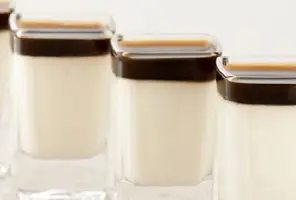
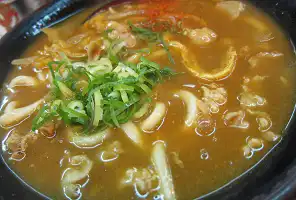
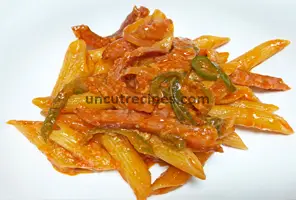
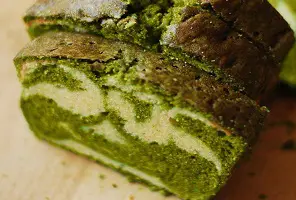




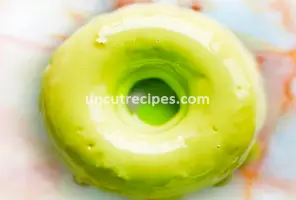
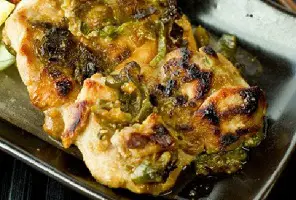
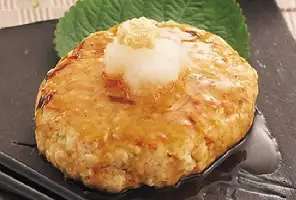

August 09, 2023
I cooked this Onigiri with Beef Shigureni, and it turned out so good! Even my kids, who are picky eaters, loved it.